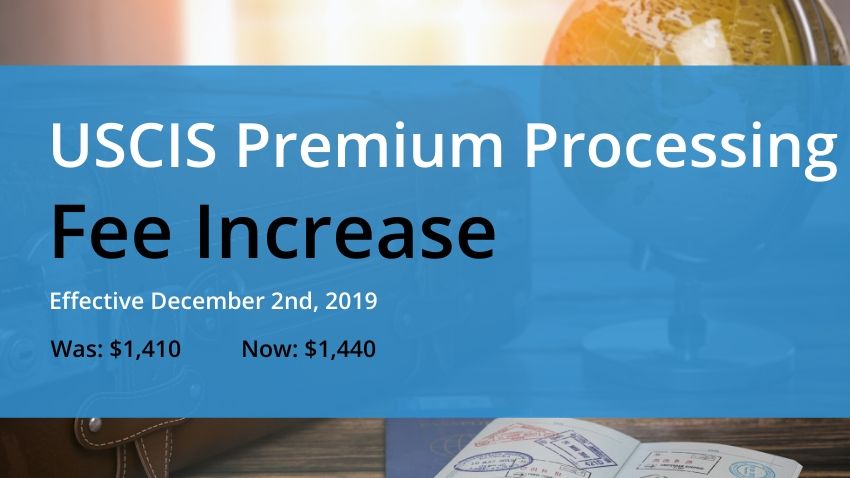For visa applicants hoping to expedite their petitions, the cost of the premium processing service, an optional service which ensures applications receive a response in 15 calendar days, is about to rise. The cost of this fee is increased based on the percentage change in the Consumer Price Index for all Urban Consumers. Fortunately, the change shouldn’t be enough to discourage those who really need a quicker visa petition decision. The cost is only rising by $30, from $1,410 to $1,440, on December 2, 2019. Fee increases of this type are done in accordance with the Immigration and Nationality Act.

Who Does the Premium Processing Fee Apply To?
Some visa applicants who need their visas quickly have the option of speeding up the process by paying extra for the premium processing service. These applicants fall primarily into two categories: those filing Form I-129 and Form I-140. Form I-29 the “Petition for Nonimmigrant Worker,” covers many of the most common and popular visa categories, including the H-1B visa. The form is also used to request an extension of stay or to change to a more long-term nonimmigrant status granted by visas like the E2 Treaty Investor Visa and E1 Treaty Trader Visa, which are intended for non-immigrant entrepreneurs and foreign investors who fall under the parameters of treaty trader and treaty investor regulations.
Petitioners who qualify under the Form I-140 category qualify based on ability and education rather than finances, and include multi-national executives and managers and “aliens of extraordinary ability” (EB-1), members of professions with advanced degrees or exceptional ability whether or not they are seeking a National Interest Waiver (EB-2), and other skilled workers and professionals.
How Does the Premium Processing Option Help Visa Applicants?
Although spending an extra $1,440 for an optional service on what can sometimes be regarded as an expensive application process might seem like a waste, applicants should consider that, as of July 2019, the USCIS was experiencing an enormous backlog to the tune of about 2.4 million applications. Paying the premium guarantees a response in just 15 days, while applicants who choose to wait can find themselves holding off on their plans and twiddling their thumbs for a month or several months longer. For an entrepreneur trying to set up operations in the U.S., that additional time can make or break the business and impact other family matters such as placing children in new schools, and applicants can end up losing opportunities and valuable time that could be spent more productively. Ultimately, it is up to each applicant to decide if paying the premium is worth it, but when time is tight it can be considered a necessary expense.

